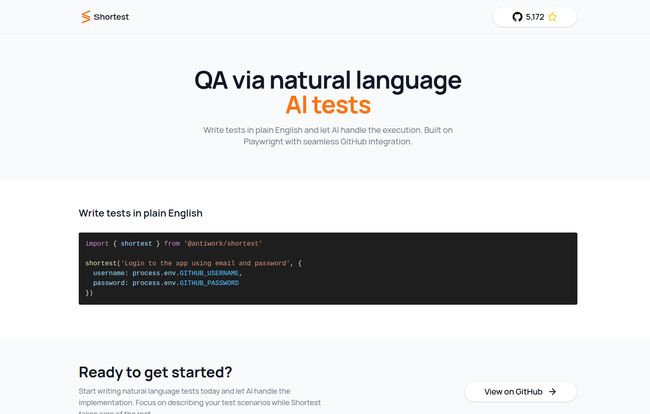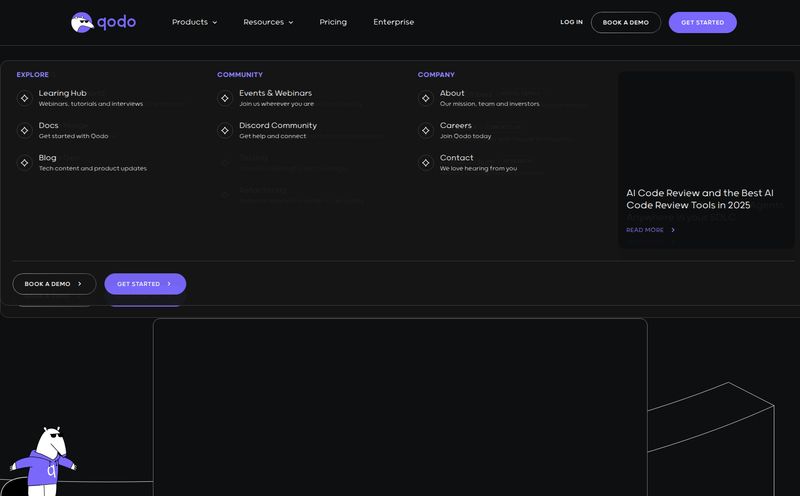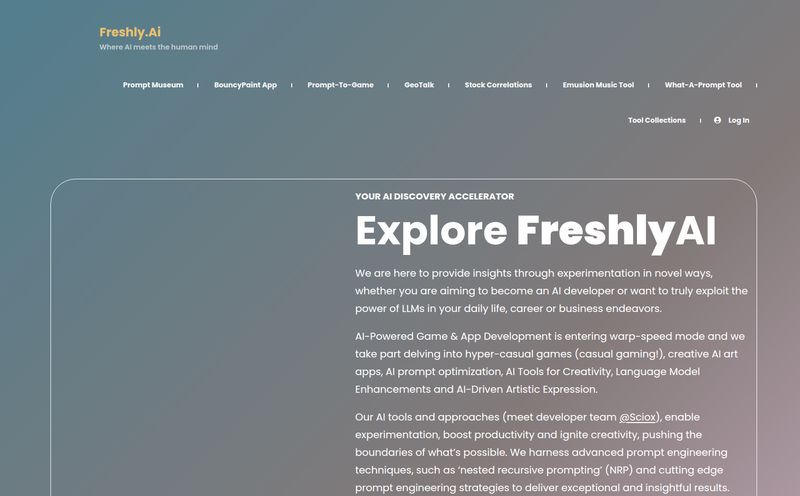You and me. As someone who's spent more years than I’d like to admit staring at build pipelines, traffic analytics, and the occasional cryptic server error, I’ve developed a certain... appreciation for things that just work. And an even deeper appreciation for things that save me from mind-numbing, repetitive tasks.
End-to-end (E2E) testing often falls squarely into that second category. It's necessary. It's critical. But man, can it be a slog. Writing selectors, handling async operations, dealing with flaky tests that fail for no good reason—it’s enough to make you want to throw your laptop out the window. We've all been there, right? Debating the merits of Cypress vs. Playwright while a critical bug just slipped into production because a test was commented out.
So, when a tool like Shortest pops up on my radar, claiming to let you write E2E tests in plain English, my cynical, battle-hardened developer brain perks up. Is it another gimmick? Or is it the real deal? I had to take a look.
So, What is Shortest, Exactly?
At its core, Shortest is an open-source AI-powered testing framework. That's a lot of buzzwords, I know. Let's break it down. It’s built on top of Playwright, which is already a fantastic tool from Microsoft for browser automation. But here's the kicker: Shortest lets you describe your test scenarios in natural language—like, actual human sentences—and its AI handles the heavy lifting of turning that into executable code.
Think of it like this. Writing traditional E2E tests is like trying to give a tourist directions in a language you only vaguely remember from high school. You’re gesturing wildly, mixing up words, and hoping they end up at the right museum. Shortest is like having a professional, fluent translator right next to you. You just say, “Tell them to go to the login page, enter their username and password, and check that their dashboard loads,” and the translator handles the rest perfectly.

Visit Shortest
The whole idea is to let you focus on the what (the user behavior you're testing) instead of the how (the specific, often finicky, implementation details). That’s a pretty compelling proposition.
Why I'm Genuinely Excited About This
I'm naturally skeptical of tools that promise to solve all my problems with a sprinkle of AI magic. But there are a few things about Shortest that feel different, and frankly, have me pretty optimistic.
Speaking My Language (Literally)
The most obvious win is writing tests in plain English. This isn't just a cool party trick. It fundamentally changes who can contribute to the testing process. Product managers, manual QA folks, even business analysts could potentially write or at least review test cases, because they're readable. It closes the gap between the people who design the features and the code that validates them. This democratization of testing is a huge step forward.
Potentially Faster CI/CD Pipelines
The team behind Shortest claims it helps run your CI suite faster than ever. How? By reducing the time spent writing and debugging the tests themselves. A faster feedback loop from commit to deployment is the holy grail of modern DevOps. If I can get a green checkmark on my pull request in 5 minutes instead of 15, that's a massive win for productivity and developer morale. It means less context switching and more time spent building cool stuff.
The Power of Playwright Without the Headaches
Building on Playwright was a smart move. It's a robust, modern, and well-supported framework. By using it as a foundation, Shortest gets all the benefits of Playwright’s cross-browser capabilities and powerful features, while abstracting away some of the boilerplate and sharper edges. You get the power of a pro tool without needing to be a total pro to use it. At least, that's the promise.
Let's Be Real: The Potential Hurdles
Okay, it can't all be sunshine and roses. No tool is perfect, especially one leaning so heavily on a rapidly-evolving technology like AI. Let's talk about the other side of the coin.
For one, the AI is only as good as the instructions you give it. Vague descriptions will likely lead to vague (or just plain wrong) test executions. That age-old programming principle of “garbage in, garbage out” applies here more than ever. You still need to be precise and clear in your descriptions, which is a skill in itself.
Second, while it lowers the bar for simple tests, the docs hint that for truly advanced or weirdly complex configurations, you might need to get your hands dirty with some Playwright knowledge. This isn't a total replacement for understanding the underlying tech, but more of a powerful assistant. That's a reasonable trade-off in my book, but its important to set expectations.
Finally, how does it handle extremely complex, multi-page, state-dependent user flows? The examples are straightforward. I'm curious to see how it performs on a gnarly, enterprise-grade web app with a dozen micro-frontends. That'll be the true test.
The All-Important Question: What's the Catch? (Pricing)
So, how much does this magic cost? This is where it gets interesting. Shortest operates on a hybrid model. The core framework is open-source, which is fantastic. You can grab it from GitHub, play around with it, and use it for your projects. Major props for that.
However, they also offer a paid plan for teams that want to take it to the next level. This seems to be where the more advanced AI assistance and workflow integrations live.
| Plan | Price | Key Features |
|---|---|---|
| Standard | $10 /user/month (with a 14-day free trial) | Automated test writing, intelligent test fixing, seamless GitHub integration, unlimited pull requests, priority support. |
| Enterprise | Custom Pricing | Custom features and dedicated support. You'll need to contact their sales team. |
The $10/user/month for the Standard plan feels very reasonable, especially if the “intelligent test fixing for broken tests” feature works as well as it sounds. Automatically fixing flaky tests? That alone could be worth the price of admission.
Who Should Give Shortest a Spin?
I see a few groups getting a lot of value out of this. Dev teams who want to move faster and hate the traditional E2E grind are the obvious audience. Startups or smaller companies without a dedicated QA engineer could use this to build a solid testing foundation quickly. And QA teams themselves could use it to accelerate their own workflows, freeing them up to focus on more exploratory and complex edge-case testing that still requires a human touch.
My Final Thoughts
Look, I think tools like Shortest are the future of software testing. We’re moving away from rote memorization of syntax and toward expressing intent. It's not about replacing developers or QA engineers; it's about giving them better tools so they can use their brainpower on harder problems. Shortest seems like a very pragmatic and well-designed step in that direction.
It's not a silver bullet—you still need to think clearly about your test cases. But it has the potential to remove a significant amount of friction from the development process. For the price of a couple of coffees a month, the paid plan seems like a no-brainer for any team that's serious about their CI/CD pipeline. I'm definitely going to be keeping a close eye on this one.
Frequently Asked Questions about Shortest
- 1. Is Shortest completely free to use?
- Shortest has a free, open-source core that you can use for writing plain-English tests. They also offer a paid "Standard" plan at $10/user/month that includes advanced features like automated test writing, intelligent test fixing, and priority support.
- 2. Do I need to be an expert in Playwright to use Shortest?
- No, not at all. The main benefit is that you can write tests in plain English and the AI handles the Playwright implementation. However, having some familiarity with Playwright might be helpful for very complex or custom test scenarios.
- 3. How does the AI actually work?
- While the exact model isn't public, it uses AI (likely a large language model) to parse your plain-English test description and translate it into the necessary Playwright commands to interact with a web browser, perform actions, and make assertions.
- 4. Can Shortest handle my application's complex tests?
- It's designed to handle a wide range of E2E tests. For extremely complex, multi-step user flows, its effectiveness may depend on the clarity of your descriptions. The best approach is to try it out on one of your more complex scenarios during the 14-day free trial.
- 5. What is the main difference between the open-source and paid versions?
- The open-source version provides the core functionality of running tests written in plain English. The paid Standard plan adds significant workflow enhancements like AI-powered test writing for new features, intelligent fixing for broken tests, and priority support, all integrated seamlessly with GitHub.



